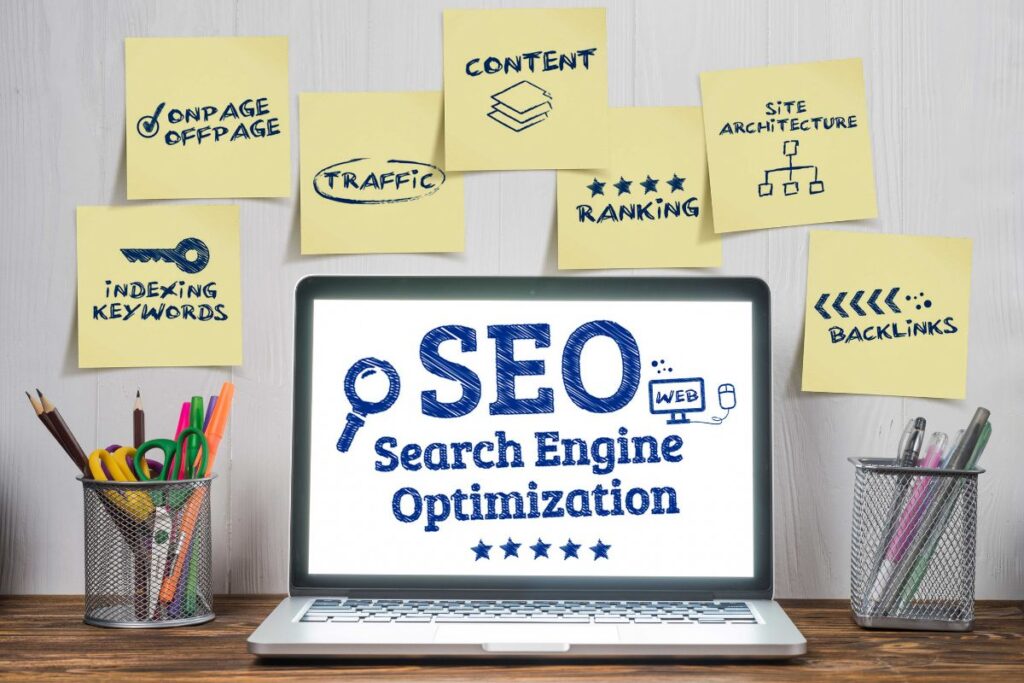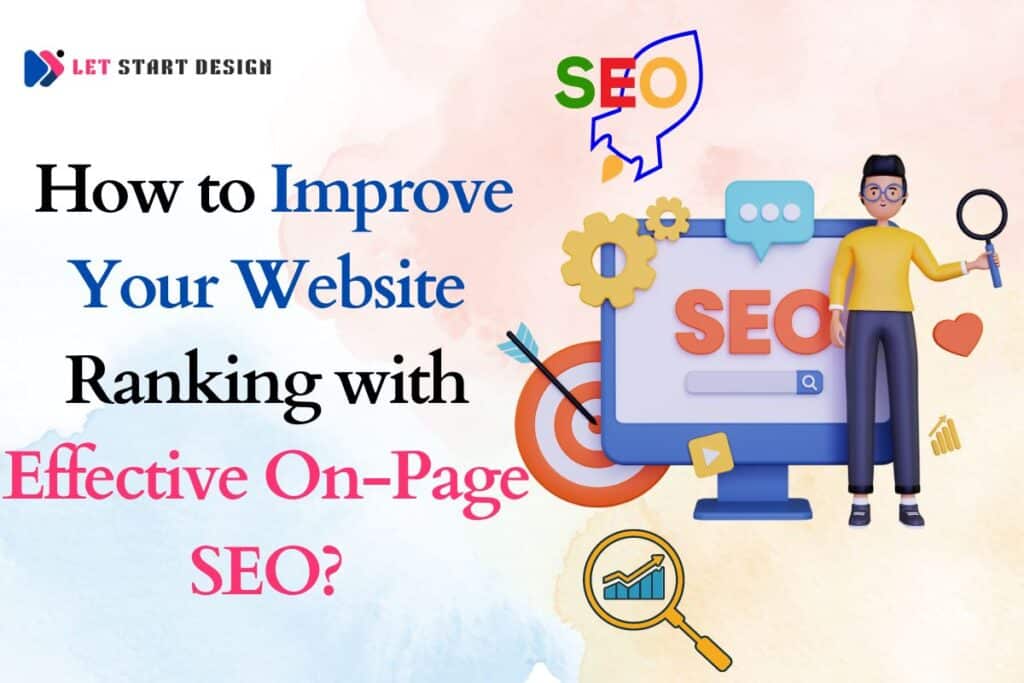In today’s digital landscape, having a strong online presence is essential for any business. One of the key factors in achieving this is ensuring that your website ranks well in search engine results. While off-page SEO strategies are important, on-page SEO plays a crucial role in optimizing your website’s content to improve its visibility and ranking. In this article, we will delve into the various techniques and best practices to enhance your website’s ranking through effective on-page SEO.
I. Understanding On-Page SEO:
-
What is On-Page SEO?
On-page SEO refers to the optimization of various elements within a website to improve its visibility and ranking in search engine results. It involves optimizing factors such as content, HTML tags, URL structure, and user experience to make the website more search engine friendly.
-
Why is On-Page SEO Important for Ranking?
On-page SEO is important because search engines use algorithms to determine the relevancy and quality of a website’s content. By implementing effective on-page SEO techniques, you can enhance your website’s chances of ranking higher in search engine results, leading to increased visibility, organic traffic, and potential customers.
II. Keyword Research and Optimization:
-
Conducting Keyword Research:
Effective keyword research is the foundation of successful on-page SEO. It involves identifying relevant keywords that your target audience is likely to use when searching for information related to your business. Utilize keyword research tools such as Google Keyword Planner, SEMrush, or Ahrefs to discover popular keywords with reasonable search volumes and low competition.
-
Optimizing Title Tags and Meta Descriptions:
Title tags and meta descriptions are HTML elements that provide concise information about the content of a webpage to search engines and users. Craft unique and compelling title tags that accurately reflect the content of the page and incorporate relevant keywords. Similarly, write engaging meta descriptions that entice users to click on your website in search results.
-
Structuring URLs:
Creating SEO-friendly URLs is essential for both search engines and users. A well-structured URL provides valuable information about the page’s content. Incorporate relevant keywords in the URL and keep it concise, descriptive, and easy to read.
-
Heading Tags:
Heading tags (H1, H2, H3, etc.) help search engines understand the structure and hierarchy of your content. Optimize heading tags by incorporating relevant keywords in a natural and organized manner. Properly formatted heading tags make your content more scannable and user-friendly.

III. Content Optimization:
-
Creating High-Quality and Relevant Content:
High-quality, valuable, and relevant content is crucial for on-page SEO. Create content that addresses the needs and queries of your target audience. Conduct comprehensive research, provide accurate information, and offer unique perspectives to establish your website as an authoritative source in your industry.
-
Optimizing Content-Length and Readability:
The length of your content can impact its ranking. While there is no ideal content length, it’s generally recommended to create in-depth, comprehensive content that thoroughly covers the topic. Additionally, enhance readability by using proper formatting techniques such as subheadings, bullet points, and short paragraphs.
-
Keyword Placement and Density:
Strategically place keywords throughout your content to signal search engines about its relevance. However, avoid keyword stuffing, as it can lead to a poor user experience and may even result in a penalty from search engines. Aim for a natural keyword density and focus on providing valuable information to your readers.
-
Image Optimization:
Optimizing images can improve your website’s loading speed and enhance user experience. Optimize image file names and use descriptive alt text to provide context to search engines. Additionally, compress images to reduce their file size and improve page loading time.
Read More: The Impact Of Social Media Across Every Part Of Your Business
IV. User Experience and Technical Optimization:
-
Mobile Responsiveness:
With the increasing use of mobile devices, having a mobile-friendly website is crucial. Ensure that your website is responsive and provides a seamless browsing experience across different screen sizes. A mobile-friendly website is not only user-friendly but also favored by search engines in mobile search results.
-
Website Speed Optimization:
Page loading speed is an important ranking factor. Optimize your website’s speed by minimizing HTTP requests, enabling browser caching, compressing files, and utilizing content delivery networks (CDNs). Regularly monitor and optimize your website’s speed to provide a fast and efficient user experience.
-
Internal Linking:
Internal linking involves linking relevant pages within your website. It helps search engines understand the structure and hierarchy of your website, distributes link authority, and improves user navigation. Incorporate internal links strategically throughout your content to guide users to relevant pages and enhance their overall experience.
-
User-Friendly Navigation:
Implement a clear and logical navigation structure that allows users to easily navigate through your website. Ensure that your website is easy to understand and navigate both for users and search engines. Create XML sitemaps to help search engines crawl and index your website effectively.
V. On-Page SEO Best Practices:
-
Regularly Update and Refresh Content:
Regularly updating and refreshing your content signals search engines that your website is active and provides up-to-date information. Update outdated information, repurpose existing content, and add new sections or insights to maintain relevance and engagement.
-
Utilize Social Media Integration:
Social media engagement can indirectly impact your website’s SEO. Share your content on social media platforms to increase visibility, attract more visitors, and encourage social sharing. Add social sharing buttons to your website to make it easy for users to share your content with their networks.
-
Utilize Schema Markup:
Schema markup is structured data that provides additional context and information to search engines. Implementing schema markup can enhance your website’s appearance in search engine results and increase click-through rates. Use schema markup to highlight important details such as reviews, ratings, events, recipes, and more.
-
Monitor and Analyze Performance:
Use web analytics tools such as Google Analytics to monitor and analyze key performance metrics of your website. Track metrics like organic traffic, bounce rate, conversion rate, and keyword rankings to gain insights into your website’s performance. Make data-driven adjustments to your on-page SEO strategy to optimize results.
Conclusion:
Optimizing your website’s on-page SEO is crucial for improving its ranking and visibility in search engine results. By implementing effective keyword research, optimizing content, enhancing user experience, and following best practices, you can significantly enhance your website’s SEO performance. Remember to regularly monitor and analyze your website’s performance to make informed adjustments. With a well-executed on-page SEO strategy, you can drive organic traffic, boost conversions, and achieve your online business goals.

















